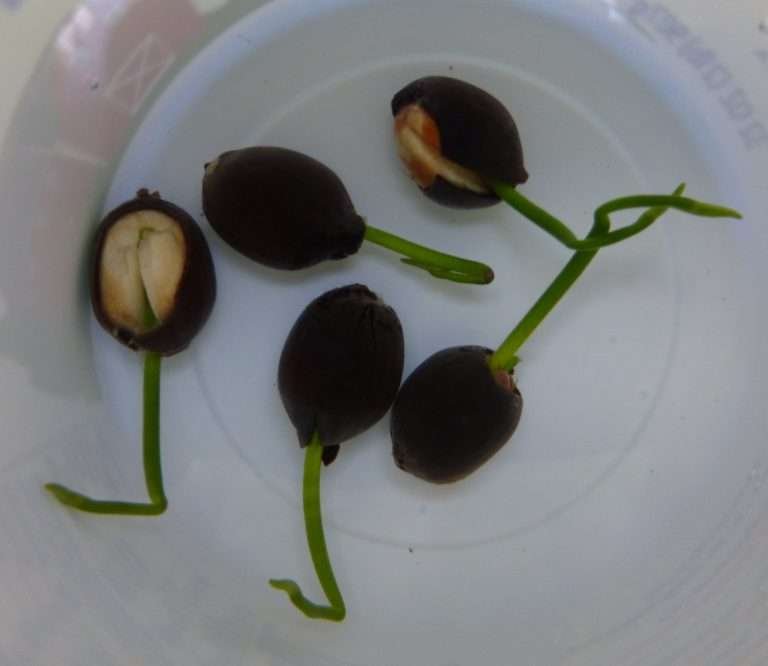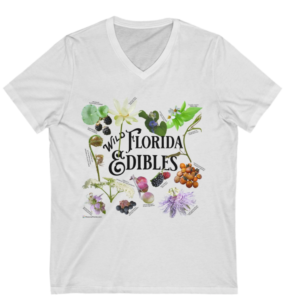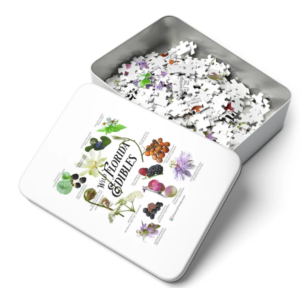
Nelumbo lutea
(American Lotus)

Common Names, Latin Name and Family
American lotus, yellow lotus, yonkapin, water chinkapin, chinquapin, macoupin, and wagipîn.
Its Latin name is Nelumbo lutea.
American lotus is in the Nelumbonaceae or lotus-lily Family.
There are only two plants in this family: the American lotus (Nelumbo lutea) and the sacred lotus (Nelumbo nucifera).
The American lotus (Nelumbo lutea) is native to the eastern side of the United States.
The sacred lotus is native to Asia and its flowers are pink. Unfortunately the Asian lotus has escaped cultivation and is found growing naturally in several Florida counties.
Form
American lotus is an aquatic plant that grows in still, or slow moving, waterways.
It can grow in water well over six feet deep.
Its leaves can grow to a foot across and it spreads by rhizomes. The leaves and flowers rise a foot or two above the water.
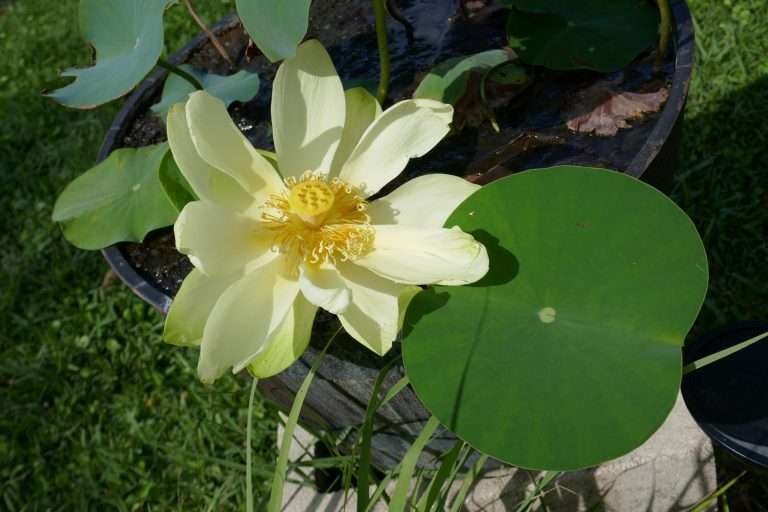
Leaves
The leaves are round and can grow to a foot in diameter. The stem (petiole) is attached to the center of the leaf. The margins are entire without any teeth or indents. Leaf veins are very prominent on the underside of the leaves.

Flowers
The flowers appear in spring, summer and fall. In Central Florida they usually start putting up blooms in late April and May.
They are pale yellow with brighter yellow centers. The flowers are very fragrant. They open in the morning and close during the heat of midday to open again the following day.
Flower stalks can be three feet or longer and the flower itself is about ten inches across.

Fruit / Seeds
The seeds can be found seated in a receptacle that has small openings for the tip of the seed to be exposed. Lotus seed heads resemble a shower head nozzle.
The seeds have an extremely hard outer coating when they are brown and fully ripened.

Habitat
American lotus grows in ponds, lakes and drainage ditches that stay continuously wet, but won’t grow in water is always moving or there is a strong current.
They are found growing in sluggish lakes, ponds, streams, and ditches throughout the eastern side of the United States.
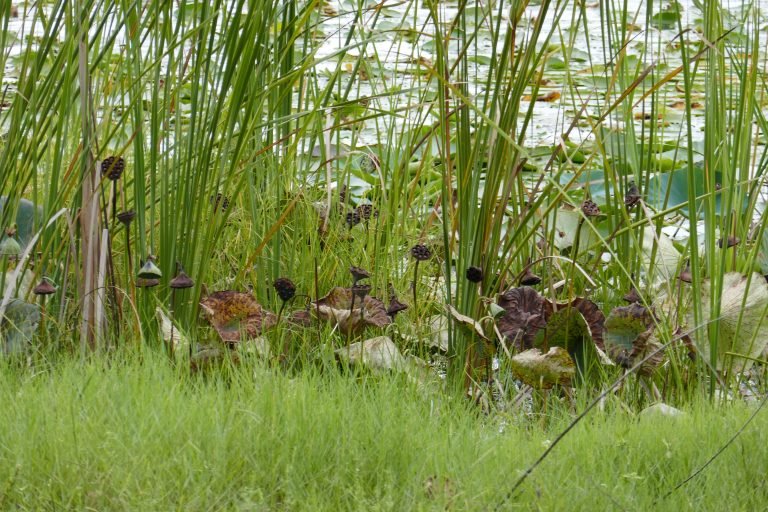
Native Range
American lotus is native to the following states: AL, AR, CT, DE, FL, GA, IA, IL, IN, KS, KY, LA, MA, MD, ME, MI, MN, MO, MS, NC, NE, NJ, NY, OH, OK, PA, SC, TN, TX, VA, and WI.
Landscape Use
Large whiskey barrel planters can be used to grow this aquatic plant if you don’t have access to a pond in your green space. They generally do not grow in streams, or areas of moving water, and prefer still waters without a lot of disturbance so can grow well in containers. The only down side is that they grow aggressively and will need to be occasionally divided to keep them in good health because overcrowding can keep them from blooming and can cause the tubers to rot.
Be aware that lotus is an aggressive grower and can quickly fill a small pond. Of course some people are thrilled to have this wonderful resource and then again some people consider them weeds. I personally love them and advocate growing them because they provide for the wildlife as well as an edible aspect to the landscape.
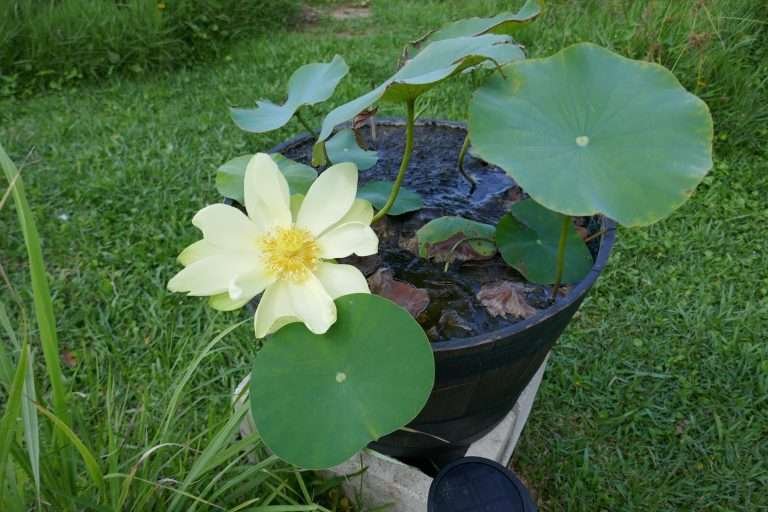
Human Uses
The roots, leaves, and seeds can be eaten when cooked. I have read some people eat young roots raw, but I don’t have experience with that so I would suggest cooking before consuming.
The immature (green) seeds can be used in different ways. Some Asian recipes call for peeling raw, green, seeds and grinding them into a paste. Some recipes call for them to remain peeled but whole. My favorite, and the easiest, preparation is to simply boil for about twenty minutes in lightly salted water and eat like boiled peanuts.
The leaves can be used as a food wrapper to cook foods in much like the way banana leaves are used for cooking fish or shrimp. Here’s a recipe for Grilled Mullet in Lotus Leaf.
The root can be used as a fresh vegetable or processed to create a starchy flour. It is only eaten when cooked. It is best peeled, sliced, and soaked before use. Check out JustHungry’s page on How to Cook Lotus Root.
For American Indians our native lotus was an essential food source because most of the plant can be eaten at various stages and it is found growing throughout the state.
It is best to avoid eating it too often as the plants are said to hold onto heavy metals from its environment. It is also wise to consider if herbicides or pesticides have been used in the immediate area before consuming.
Wildlife Uses
American lotus provides excellent cover for lake wildlife. The submerged stems provide a network of cover for juvenile fish and the invertebrates they eat.
The beautiful floating leaves provide a canopy for larger fish to use as a hunting grounds because they house many spiders and insects.
The flowers, and seed pods, provide small hiding spots for frogs and insects.
In north Florida beaver eat the seeds, roots and shoots.
Here in central Florida muskrats eat the seeds, roots and shoots and use the plant material in creating their dens.
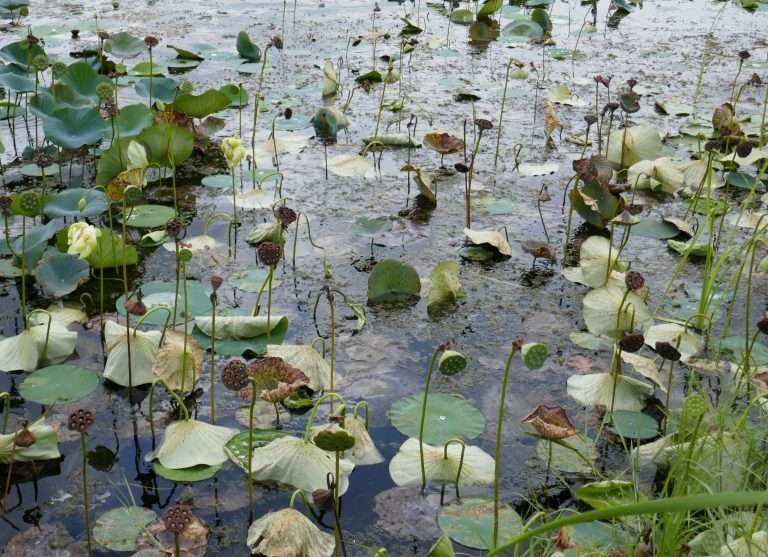
Propagation
American lotus can be grown easily from seed or transplanting a tuber.
The seeds need to be soaked in water for several days until green sprouts are seen. The outer coating is very hard and keeps out water so when germinating the coating needs to be scarified, or scratched, so the coating has a nick in it to allow water to soak in.
Scarifying can be achieved with nail clippers or a grinder (as long as the scar isn’t too deep because it can kill the embryo). Go gently with a grinder and just go deep enough to see the white of the inside embryo.
